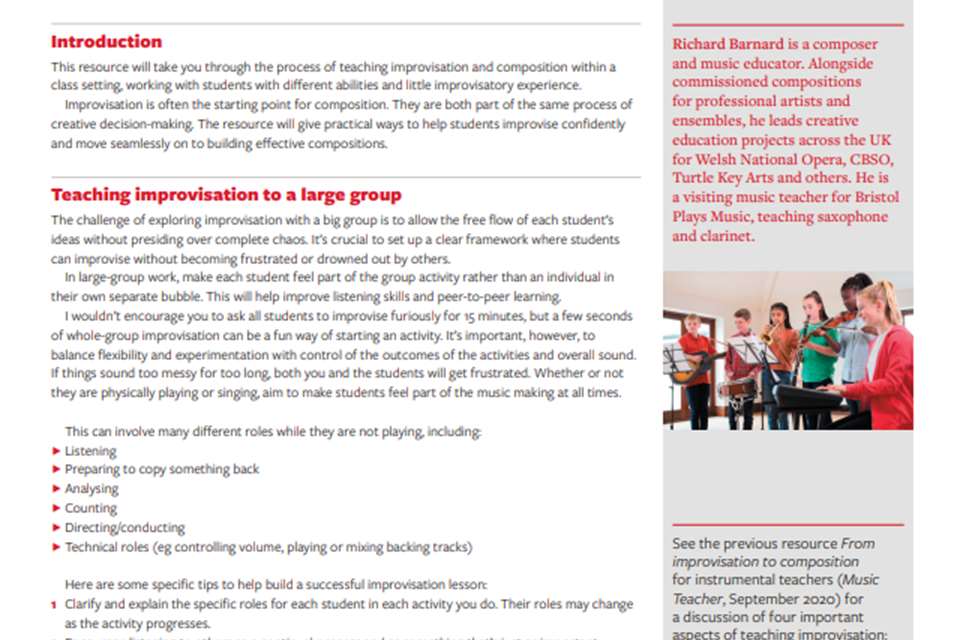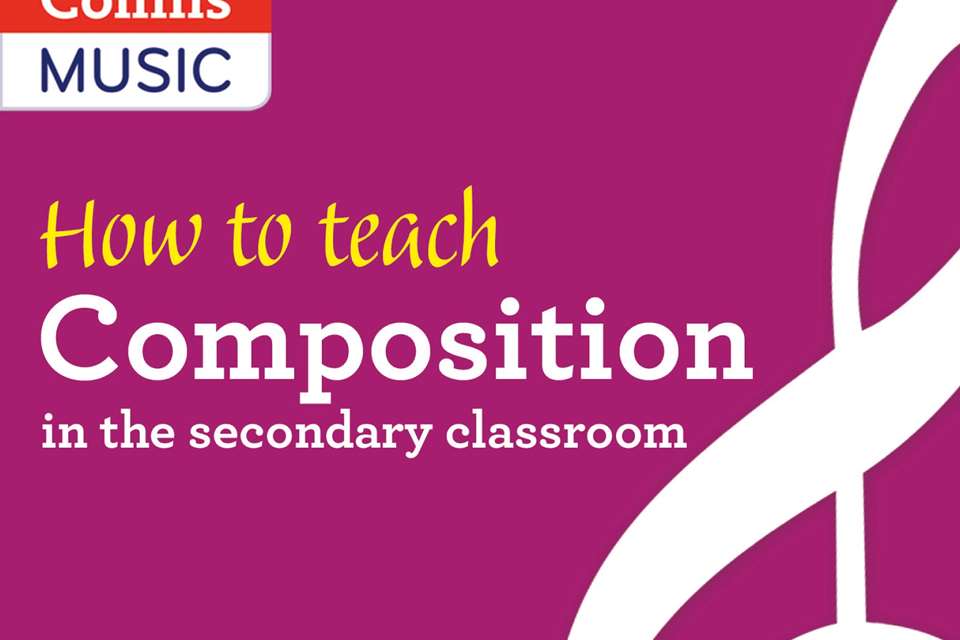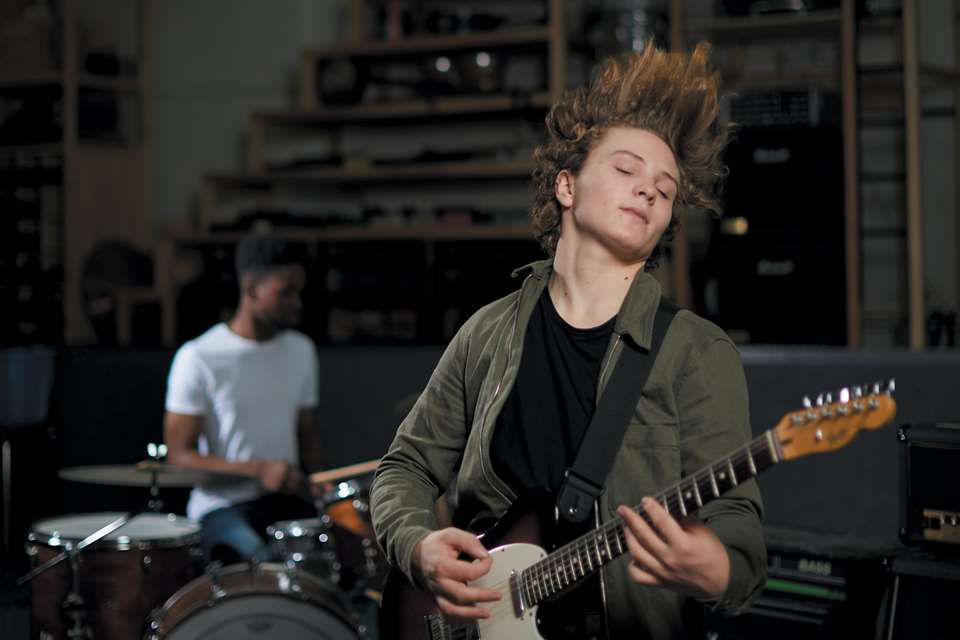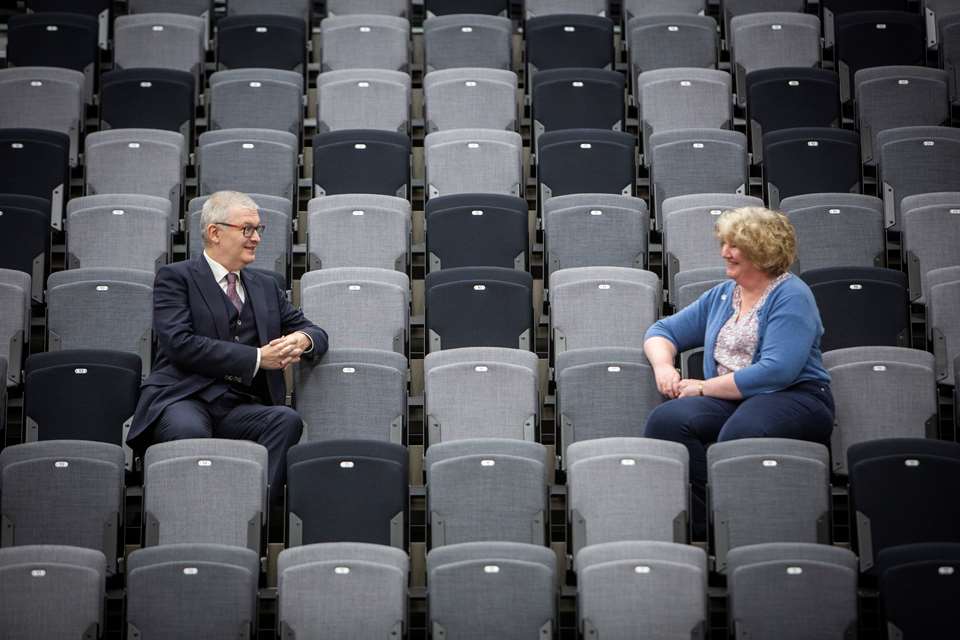Mental health and wellbeing column: Positive growth
John Habron
Friday, October 1, 2021
This month, our fourth and final column partner Royal Northern College of Music (RNCM) offers insight into using Dalcroze in the classroom to support student wellbeing. Dr John Habron elaborates on music and movement for mental health.
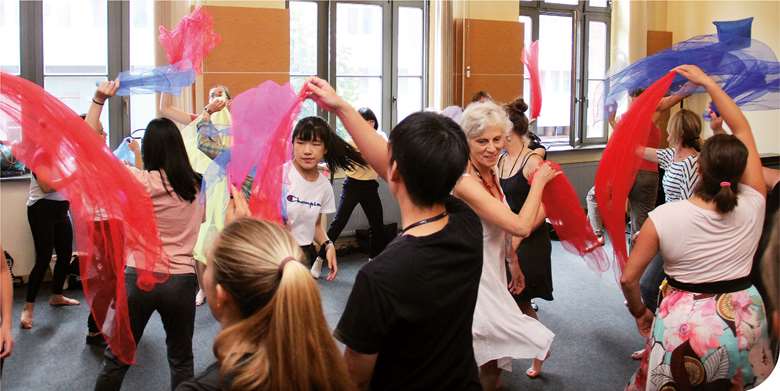
Nikola Szymanska
Dalcroze is a way of teaching and learning music through exploring music-movement relationships that originated in the work of musician-educator Émile Jaques-Dalcroze. Typically, the class works barefoot in a large space, the teacher improvising at the piano or using recorded music to incite movement. Responding to changes in the music, participants find ways to show what they hear, individually or in groups, coordinating their action and sharing space. The reverse, to make music for what they see other students do, is just as important. The activities therefore bring attention to the physical, social and emotional experiences of students.
By moving through space (for example, walking, jogging, skipping, striding) the class makes rhythmic patterns physical and visible, sometimes combining this with arm movements to analyse duration, metre and polyrhythm in an embodied way. Singing and vocalisation are also integral and linked to movement, allowing students to explore pitch and harmonic relationships through action.
In Dalcroze lessons, a focus on careful listening and observation (impression) is matched with opportunities for improvisation and creative movement (expression), and these are often combined in a single activity. Exercises build in a gradual way and students engage with the same musical material through different modalities (movement, listening, vision, touch, voice). Dalcroze pedagogy is adapted for students with special educational needs and disabilities, and is applied across the lifespan, including for the wellbeing of elderly people.
Take five
Because the Dalcroze class invites us to move and express ourselves physically and uninhibitedly, it can feel a vulnerable space and requires great tact on the part of the teacher. On the other hand, herein lies its potential as an opportunity and means for students to grow in self-confidence and awareness of self, other and their environment. Recent research gives us rich insights into participants' experiences and often discusses them in relation to wellbeing. Here are five examples:
- Dalcroze students often report enjoyment as the overriding emotional experience of this way of learning, where the exercises often have a playful, game-like quality. Jaques-Dalcroze recognised positive emotion as a powerful stimulus for learning and believed it was the teacher's responsibility to create pleasurable experiences in the classroom.
- Participating in Dalcroze requires concentration, flexibility and quick reactions, with students responding as much to the shifting positions of other people in the space, as to the music. Participants often identify with the music to the extent they ‘become’ the music, living completely in the present moment. These are examples of flow experience, a type of engagement where complete absorption combines with a feeling of being equal to the task in hand.
- One of the major themes in recent research into experiences of Dalcroze is relationship. Musical rhythm invites us to move in time with it and each other (entrainment) and affords feelings of social bonding. Likewise, the fundamentals of human communication are built on musical dynamics (communicative musicality), and this forms the basis of non-verbal communication in the Dalcroze class, where we show what we mean through expressive movement and our use of space and objects (balls, scarves, sticks).
- Joyful experiences wherein we feel connected and feel a sense of flow help to give meaning to our lives. These can also be understood as spiritual, where students transcend themselves or the space and feel connected to something extremely special, valuable, or sacred.
- In offering step-by-step learning, Dalcroze affords a sense of incremental achievement. From a simple act of walking to a beat, where we know that each step ‘fits', exercises build in complexity where we can feel gradually increasing mastery and accomplishment.
If we consider the essentials of these five examples then we have positive emotion, engagement, relationship, meaning and accomplishment. Together, these spell PERMA, Martin Seligman's model of wellbeing that has been enormously influential in the field of positive psychology and beyond. Dalcroze is not often connected to mental health as such, but its potential to foster positive growth and flourishing is clear if we look at it through this lens. Judging from the testimonies of students and teachers, it has an important role to play in their psychological wellbeing.
Recommended reading
Dalcroze and wellbeing: Seligman, M. E. P. (2011). Flourish: A visionary new understanding of happiness and well-being. Free Press.
General reading: Nivbrant Wedin, E. (2015). Playing music with the whole body: Eurhythmics and motor development. Gehrmans Musikförlag.
Dalcroze has been part of RNCM's learning culture for more than three decades, with students from the Junior programme (JRNCM) to Master's level taking classes. If you wish to experience Dalcroze for yourself or undertake training, visit www.dalcroze.org. To find out more about current Dalcroze practice and research worldwide, try the 5th International Conference of Dalcroze Studies (22–23 October, online): www.dalcroze-studies.com
Dr John Habron is head of Music, Health and Wellbeing at Royal Northern College of Music and extraordinary associate professor, Musical Arts in South Africa: Resources and Applications (MASARA), at North-West University, South Africa. www.rncm.ac.uk


